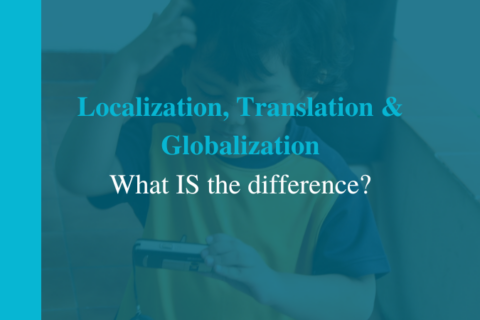Website Translation Services – A Complete Guide
Translate Your Website Content and Grow Your Audience
One. Point. Two. Trillion searches. Every single year. People fire up their devices and search to the tune of 1.2 trillion – with a T – times, and that’s just on Google. That’s pretty mind-blowing when you consider the amount of information at our fingertips. We have answers to every question and solutions to every problem, and businesses like yours are offering services for every kind of client. Everywhere.
The worldwide web is just that: worldwide indeed. Exponential growth in internet access has meant unparalleled opportunity for businesses to expand their client base and reach people once thought to be impossible.
Website Localization & Translation for a Global Audience
Nearly 80 percent of the global population has access to the internet in some capacity. Five and a half billion people, many of whom don’t speak your language, are out there looking for services. Your services? Maybe. And maybe they will find you. But when they do, they must understand you. If they don’t, they’re gone. The opportunity has vanished. And the thing about opportunity, you can never be sure it will come back around to you. So why take the chance?
Enter website translation. Enter benefits to you and positive impact on your bottom line. What are some benefits to offering your website in multiple languages with professional website translation services? I’m so glad you asked!
- Trust: Consumers are much more likely to do business with people they believe speak their language. A shared language is our way of connecting with others and the more you connect with them, the more you can win them over.
- Loyalty: Once they trust you and choose to do business with you, the experience should make them more likely to stay with you in the long run. Translating a website might fall under the purview of “cost per acquisition,” and the resulting effect could be a swoon for your customer retention.
- Above the Crowd: Finding websites in multiple languages is still relatively rare. Providing these options for folks will surely present you in an even better light when compared to other businesses they are considering.
- Marketing Boost: Building on that unique position your multilingual website is creating for you, you might find success ranking for search terms in one language over another. You might find it lucrative to segment and target consumers in different languages, thus learning their behavior.
Undertaking the Website Translation Project
Once you’ve decided as a business that website language translation services make sense for you, there are a few things to consider:
- What Languages to Target
- What Content You Need to Translate
- Simple Translation Is Likely Not Enough
- Final Quality Assurance
What Languages Should I Target When Translating a Website?
The first question you should have answered is where you conduct most of your business or where you see the most revenue coming from outside your borders. If you notice a significantly higher number of clients from Mexico, for example, you should consider a Spanish version.
The next question you should ask yourself is where the market is headed. If you’re paying attention to current trends in your industry, then you likely have an idea of places around the globe gearing up for your product or service. Looking ahead will position you at the forefront of your industry and with even the tiniest bit of effective outreach, you can foster those long term, brand-loyalist relationships.
What Website Content Needs to Be Translated?
Deciding which website content needs to be translated will ultimately depend upon your goals with the translated version. It could be the entire website, or it could make sense for you to translate specific pages or sections. It might be most cost-effective to just focus on a landing page and a specific product or service page. It might also make sense to convert the entire site, giving users the same experience.
Whatever route you decide to go, you also must ensure the localized content is optimized for SEO (search engine optimization) in that language. You don’t want to put in all this work and then not be found, right?
Transcreation Over Translation
In our industry, translation refers to the literal, word-for-word changing of one language directly to another. This is often done in cases where context and cultural norms aren’t as important as just having the information the other language. Maybe it’s a list of technical terms or an announcement like “Wear Seatbelt on Bus”. Your website, however, will likely require something a little more thorough and robust. People come to your site with questions. They’re wondering what you do and if you can help them. It’s a chance to tell your story of solving problems and why they should trust you with that job. That’s where transcreation comes in.
With transcreation, human linguists take the time to fully understand the content, the message behind the content, and how that message is best received to the intended audience. It’s naturally more labor-intensive and comes with a higher price tag. However, in the end you’ll you have a product – your transcreated website – that represents you well, meets your quality standards, and builds trust.
One public example of translation going awry was Braniff Airlines. They had just introduced leather seats on their planes in Latin America and ran ads with the same tagline, “Fly in Leather,” that they used in English: “Vuela en Cuero.” For many Spanish speaking countries, this was fine. In Mexico, that phrase also means “fly naked.” Ha! I’m quite certain that was not what they were going for.
Ultimately, you want to be certain your finished product truly represents the message you hope for.
Quality Assurance
In the same way you likely had staff on hand to ensure your current website is free of errors, conveys the right message, and provides a great user experience, you will want folks who can do the same for your newly translated website.
You don’t have to use a Language Service Provider. However, doing so will ensure you have that final set of eyes on the material by professionals who spend their days doing this very work. For example, we at Compass Languages are an ISO 9001:2015 certified organization. What this really means for you is that we provide a standardized series of quality assurance measures to guarantee the project meets your expectations.
Is Website Translation Right For You?
Only you know what’s best for your business. You know your goals, target audience, and projections for growth. If you find that the global business frontier is one you want to capitalize on and you see the possibilities of “business without borders,” then it may be time to consider translating some, or all, of your biggest digital puzzle piece – your website.
And just know that we are always here to answer any questions and help you decide the right direction to go – so go… The whole world awaits! Global eLearning provides website translation and localization services done by experts who have the knowledge and experience, so your website is free of errors. If you’re tasked with translating or localizing content for a global audience, contact Global eLearning today for a free consultation.


